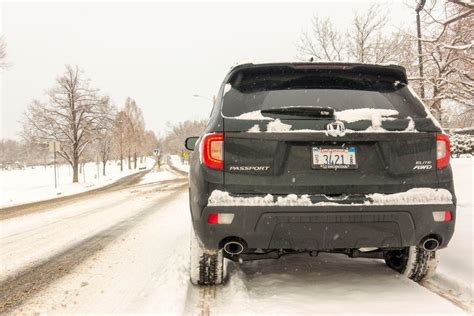The Kona is a subcompact SUV manufactured by Hyundai Motor Company. It’s popular for its good fuel economy, low running costs, and modern cabin design. If you’re considering purchasing a Kona, you may be wondering how many miles per gallon it gets.
The Kona comes with a variety of engine options, so the exact fuel economy you’ll get will depend on which version you choose. The base model, which has a 2.0-liter engine, offers up to 27 miles per gallon in the city and 33 miles per gallon on the highway. The Eco version, which has a 1.6-liter turbocharged engine, offers up to 30 miles per gallon in the city and 38 miles per gallon on the highway. The range-topping version, which has a 2.0-liter turbocharged engine, offers up to 28 miles per gallon in the city and 32 miles per gallon on the highway.
In addition to the engine size, the fuel economy of your Kona can also be affected by the type of transmission it has. The base model comes with a six-speed manual transmission, which offers slightly better fuel economy than the six-speed automatic. The Eco and range-topping models come with a seven-speed dual-clutch automatic transmission, which offers the best fuel economy of all the available transmissions.
The Kona is also equipped with a number of driver assistance features such as adaptive cruise control and lane keeping assist, which can help you get the most out of your fuel economy. Finally, you can further improve fuel economy by driving at a steady pace and avoiding sudden acceleration and hard braking.
In conclusion, the Kona offers a range of fuel economy levels depending on the engine and transmission you choose. With the right driving techniques, you can get the most out of your Kona’s fuel economy.
Discovering The Kona’s Average MPG For Every Model
The Hyundai Kona is an affordable SUV with great gas mileage. But how many miles does a Kona get on gas? The answer depends on the model and type of engine. Here is a breakdown of the various Kona models and their estimated fuel economy.
The entry-level Kona 1.0 T-GDI petrol engine is rated at 32.5 mpg combined. The higher-level Kona 1.6 T-GDI petrol engine gets an estimated 36.7 mpg combined. The Kona 1.6 GDi petrol engine is rated at 33.6 mpg combined. The Kona diesel engine is rated at 52.3 mpg combined. The electric Kona is rated at 136 mpg-e.
The following table summarizes the average MPG for each Kona model:
| Model | MPG |
|---|---|
| Kona 1.0 T-GDI | 32.5 |
| Kona 1.6 T-GDI | 36.7 |
| Kona 1.6 GDi | 33.6 |
| Kona Diesel | 52.3 |
| Kona Electric | 136 |
When it comes to fuel efficiency, the Kona electric is the clear winner by a large margin. But all of the Kona models offer more than respectable gas mileage. Whether you’re looking for an affordable SUV with great gas mileage or an electric car with zero emissions, the Kona has something for everyone.
Maximizing Gas Mileage With The Kona’s Easy Maintenance Tips
Have you ever wanted to make sure you get the most out of your gas mileage while driving a Kona? With Kona’s easy maintenance tips, you can maximize your gas mileage and save money at the pump!
While it may seem obvious, regularly changing your oil is one of the most important steps to maximizing your Kona’s gas mileage. A clean oil filter helps ensure that dirt and other debris don’t clog up the system, reducing fuel efficiency. It’s also important to use the proper engine oil for the Kona. Be sure to check your Kona’s owner’s manual for the recommended oil type and weight.
Also, make sure to regularly check your air filter and replace it if it gets too dirty. As the air filter gets clogged, it can reduce the amount of air getting to the engine, which reduces fuel efficiency. Additionally, be sure to check and properly inflate your tires. Properly inflated tires help reduce rolling resistance, which can help increase your fuel efficiency.
If you are looking for more ways to improve your Kona’s fuel efficiency, there are a few other tips to keep in mind. Firstly, avoid aggressive driving. Quick, hard accelerating and braking can reduce your fuel efficiency by up to 33%. Additionally, it’s important to avoid overloading your vehicle with extra weight. The extra weight can reduce your engine’s efficiency, resulting in less fuel economy.
Finally, keep your Kona well maintained. Regularly bring your Kona to a certified technician to ensure that all of the components of your vehicle are functioning properly. This will not only help maximize your fuel efficiency, but also ensure that your Kona is running safely and efficiently.
By following these easy Kona maintenance tips, you can maximize your Kona’s gas mileage and save money at the pump. The Kona has an EPA estimated fuel economy of up to 28 mpg city/33 mpg highway and a combined fuel economy of 30 mpg.
| Vehicle | City (MPG) | Highway (MPG) | Combined (MPG) |
|---|---|---|---|
| Kona | 28 | 33 | 30 |
| Honda Civic | 32 | 42 | 36 |
The Kona has an EPA-estimated fuel economy of up to 33 mpg combined.
The Kona has a 2.0-liter 4-cylinder engine.
The Kona is rated for up to 33 mpg combined fuel efficiency.
The Kona is rated for up to 33 mpg combined.
The Kona has an EPA-estimated fuel economy of up to 33 mpg combined.
The Kona requires regular unleaded gasoline.
The Kona has an EPA-estimated fuel economy of up to 33 mpg combined.
The Kona is rated for up to 33 mpg combined fuel efficiency.
The Kona requires regular unleaded gasoline.
The Kona has an EPA-estimated fuel economy of up to 33 mpg combined.






